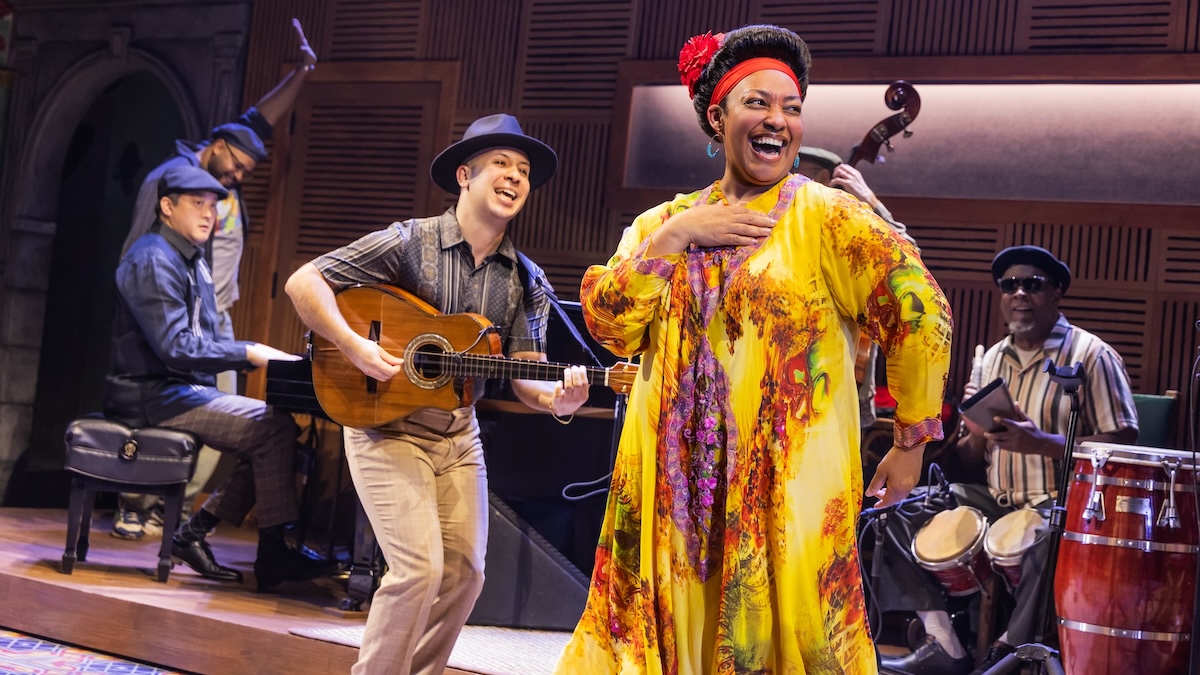By Cris Franco
Inspired by the much lauded 1999 documentary and its accompanying Grammy-winning album of the same name, Buena Vista Social Club has morphed yet again. This time into Broadway’s newest mega-hit musical. Playing to packed houses at the Gerald Shoenfeld Theater, it’s a tropical party that pulsates with rapturous Afro-Latino rhythms set against the tumultuous human drama that was mid-century Cuba.

To bring the era, the artists and their musical masterworks to the stage, book writer Marcos Rodriguez has cleverly blended fact with fiction and woven two parallel story lines. One, set in the 1950s, follows the talented young singers Omara and Haydee Portuondo who have broken through the color barrier by appearing at Havana’s exclusive (predominantly white) Tropicana night club. When they are invited to sing at the Afro-Cuban Buena Vista Social Club, the sisters are of different minds. Haydee, who dreams of a recording career for the team, sees no benefit in slumming it among the locals. She asks why should they perform at the Buena Vista Social Club? “Because there are no tourists there,” exclaims Omara, “because they’re playing for us!”
Enter the Cuban Revolution and the impact of Omara’s prophetic words will be echoed throughout the accompanying story line that takes place some forty years later in 1996. Record producer Juan de Marcos (affable Justin Cunningham) is looking to preserve for posterity that iconic Buena Vista Social Club sound. His plan: to reunite the original musicians for a historic recording. De Marcos’ efforts in locating and reuniting those veteran artists takes the audience into a unique theatrical experience. We journey back in time to a place where smoking-hot musicians pioneer a raw, sensual, celebratory Latin-jazz that sets the room dancing to songs recounting the highs and lows of island life and tells of the saga of one woman’s journey to preserve the purity of her art.
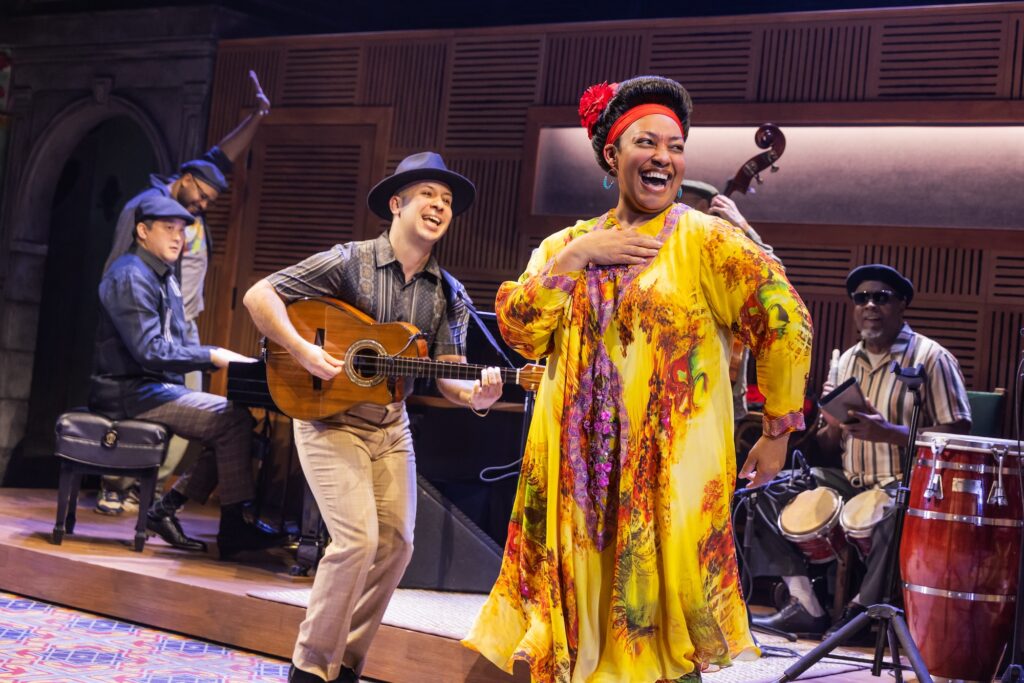
That woman is the musical’s central character, the now older Omara Portuondo (Tony-nominee, the regal Natalie Venetia Belcon). We learn that when Young Haydee fled Cuba with their American record contract in hand, Young Omara opted to stay and keep alive the authentic music of her homeland. Which she did for the next forty years.
Fast forward to the 1990s where de Marcos is pulling together some of the original Buena Vista Social Club musicians. Through these meetings we learn their sometimes heartbreaking backstories of survival and witness their time-tested talents. All want to participate — only Omara is holding out. But after much cajoling, soul searching and hearing the musical magic they create — she finally agrees to be their lead singer. Joining her to perform these pure versions of classic Cuban “bolero,” “guajira” and “danzon” are guitarist-singer Compay Segundo (Da’Von T. Moody), pianist Rubén González (Leonardo Reyna), and vocalist Ibrahim Ferrer (Wesley Wray). All are gifted at presenting these songs in the unbridled Afro-Cuban Spanish dialect. (Kudos to the creators for wisely choosing to not translate these highly stylized lyrics into American English, but rather allowing the original words and music to speak for themselves.)
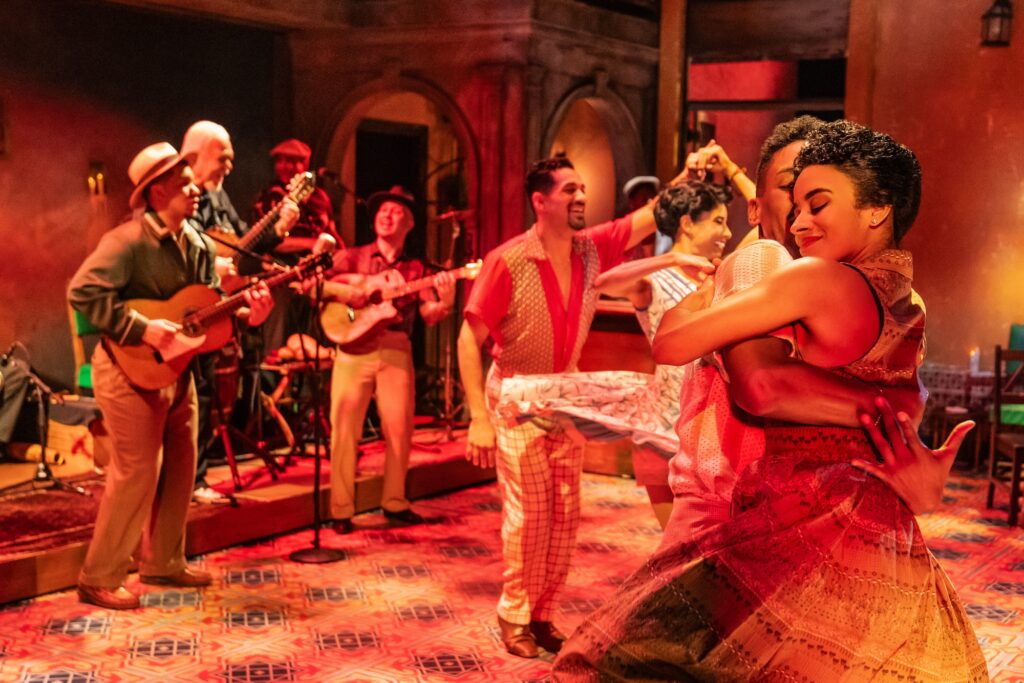
And what songs! The show features such classic as the slow ballad of “Chan Chan” who, while at the beach, was so taken by his love for his woman, Juanica, that when she shook her body to shake off some sand, Chan Chan grew embarrassed of his desire for her.
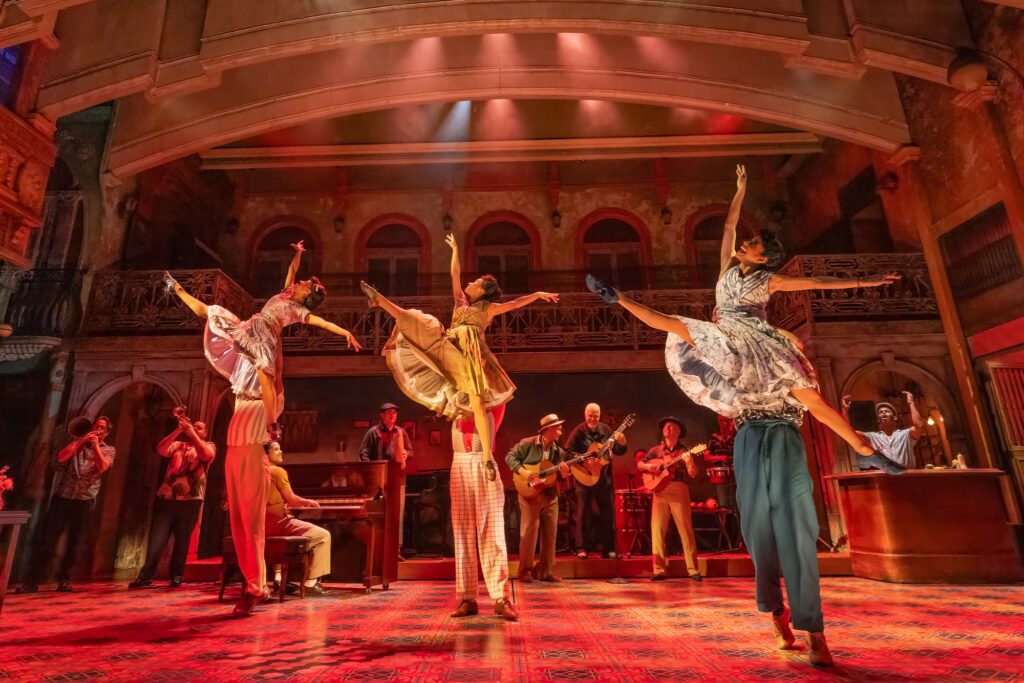
“El Cumbanchero,” an uptempo about a party animal who dances the cumbia. The song’s fun-loving main character lives each day to the beat of the bongo. “El Cumbanchero” was made famous by Desi Arnaz who first recorded it in the mid 1940s and later performed it on his TV show, I Love Lucy”, “El Carretero” a guajira (country lament) about a hard working cart driver — a traveler who dreams of one day marrying and settling down but for now is a guajiro (peasant) going about his job. These quotidian story songs and many more fill the Buena Vista Social Club with an intimate look at the simple truths of the value of living life to its fullest.
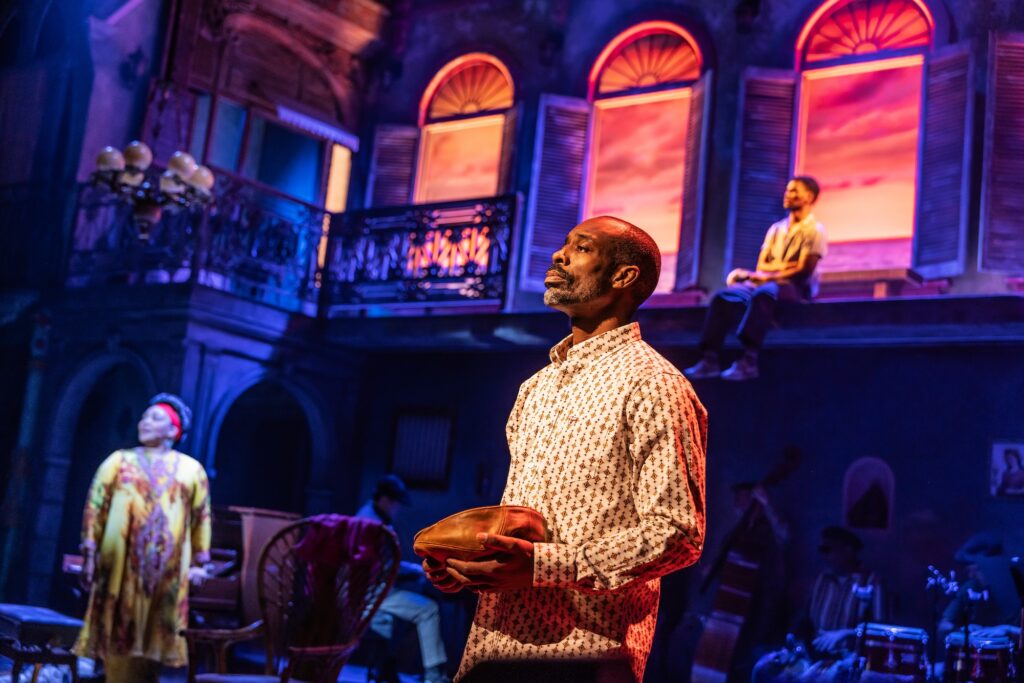
Immersing us deeper into the show’s exploration of the human condition is the evocative and sensual choreography (Tony-nominated Patricia Delgado and Justin Peck), versatile and elegant set design (Tony-nominated Arnulfo Maldonado) and a tight compelling book by Tony-nominated Marco Ramirez. The result: the Buena Vista Social Club creates a cultural collage of the Afro-Cuban experience that explodes with color, movement to the tune of the world’s most iconic tropical music.
The historic ensemble consist of Julio Monge as Compay, Mel Semé as Ibrahim, Jainardo Batista Sterling as Ruben, Isa Antonetti as Young Omara, Renesito Avich as Eliades, Ashley De La Rosa as Young Haydee, with Angélica Beliard, Carlos Falú, Héctor Juan Maisonet, Ilda Mason, Marielys Molina, and Anthony Santos in the ensemble.
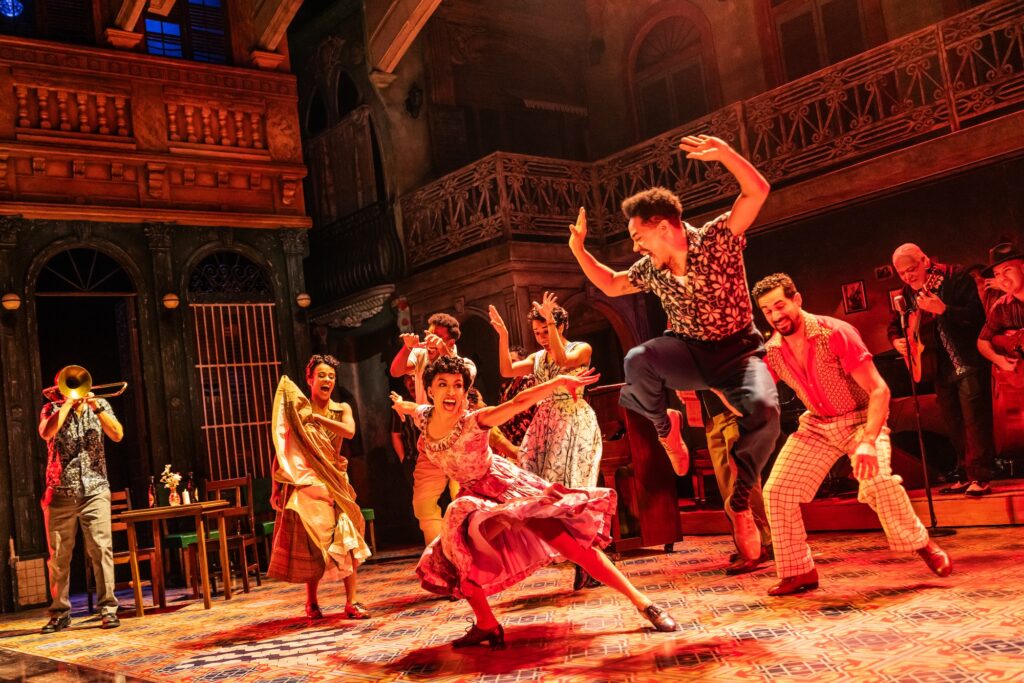
Recreating the sound that launched a thousand fiestas are the virtuosos Marco Paguia (conductor & piano), Henry Paz (woodwinds), Jesus Ricardo (trumpet), Eddie Venegas (trombone), Javier Diaz (percussion), Roman Diaz (percussion), David Oquendo (guitar), Resesito Avich (tres chordophone guitar) and Gustavo Schwartz (bass).
How good is Buena Vista Social Club? You don’t need to be a Cuban music aficionado or even understand Spanish to be swept away by the transporting beat of the 12-member onstage orchestra accompanying the gifted singing cast and the three dancing couples that so beautifully interpret the music in a mix of dance styles from Afro-Cuban to ballroom. This reviewer was enthralled by how organically the stories, songs and dance all supported each other in a seamless exploration of how artistic expression can help keep alive the soul of a people in crisis. And amid the hoots and bravos from the entranced audience swaying in their seats, you will have no other choice but to be also swept away by the celebration of life on stage. I recommend that everyone see the Buena Vista Social Club on Broadway or by way of the national tour now preparing to bring to our world in crisis its healing message: the opposite of war is creation. And the Buena Vista Social Club is a joyous, healing, creative masterpiece.



